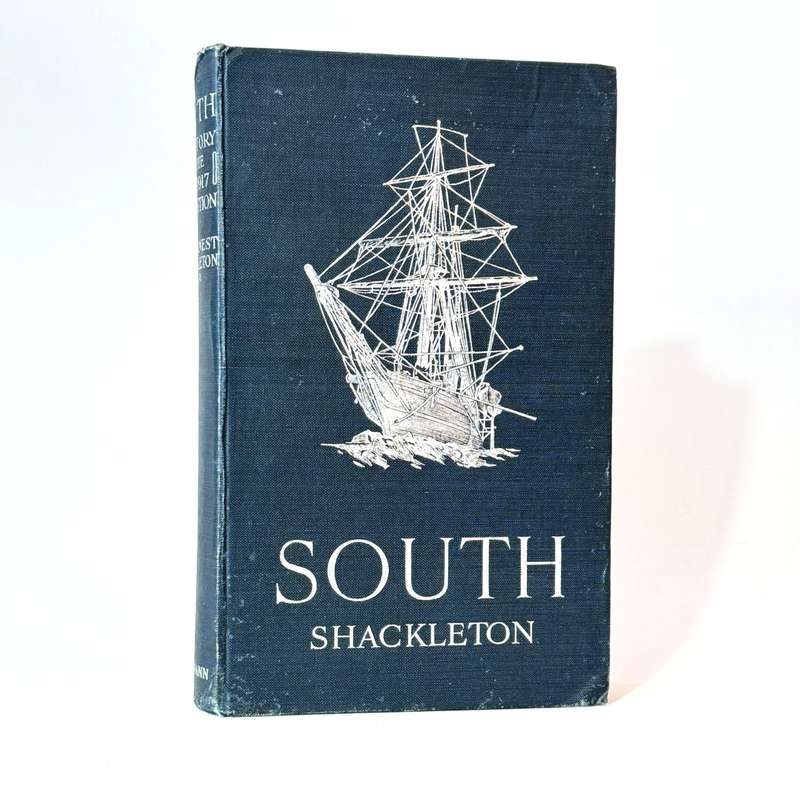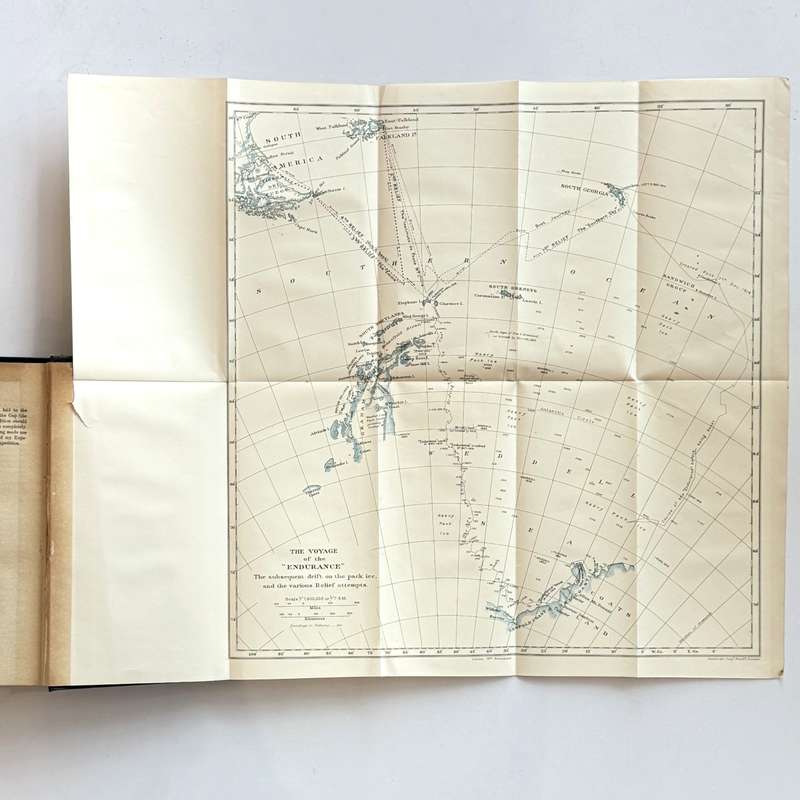









South. The Story of Shackleton's Last Expedition 1914-1917. A scarce first edition. - Shackleton...
Check my rate
| Main centres: | 1-3 business days |
| Regional areas: | 3-4 business days |
| Remote areas: | 3-5 business days |










| Main centres: | 1-3 business days |
| Regional areas: | 3-4 business days |
| Remote areas: | 3-5 business days |
"... the last major expedition of the heroic Age of Antarctic Exploration."
This expedition was an attempt to make the first land crossing of the Antarctic continent. Shackleton's party sailed from South Georgia on 5th December 1914 on the Endurance bound for Antarctica via the Weddell Sea. Progress was slow initially, the Endurance encountering pack ice within 2 days of departing. Conditions eased and after two weeks they were deep into the Weddell Sea. By the 7-10th January they approached the great ice walls which guarded the Antarctic coast. They continued edging southward to their intended landing at Vahsel Bay. By mid-February they were held fast by pack ice. They were now trapped and drifted northwards. Nine months later the Endurance was still fast in the ice and had been badly damaged. The ship was abandoned and Ocean camp was established. On 15th November, 1915, the Endurance slipped below the ice. A failed attempt was made to march across the ice to the safety of land. A camp was set-up on the ice floe and the hope was that they would drift northwards to safety. By April 1916 the ice had started to break up so that they could launch their three lifeboats. This they did and sailed for the uninhabited Elephant Island. The journey took 7 days. It had been 497 days since they had last stood on solid ground. Nine days later Shackleton sailed one of the lifeboats, the James Caird back to South Georgia to the Stromness whaling station. It was only by 30th August, 1916 that Sir Ernest aboard the Yelco could return to Elephant Island and rescue the remaining 22 members of his crew just over 2 years since they had left England. No inscriptions. Errata slip is tipped onto Page 1. Heinemann advertising postcard is present as is the booktrade label of Gieves, Portsmouth. A 3mm nick to prelim xxi. Short tear close to the hinge of the map. Dark blue cloth binding with bright silver vignette of the Endurance on the front board. Blind stamp of the Publisher Heinemann on the back board. Corners bumped and light scuff marks to the boards. A little fraying to the head of the spine. Foxed and toned throughout which seems to be the standard due to the post-war poor quality paper. Faint blue tint to top edge of the block. Overall a very good copy. First Edition. Condition: Very good. Binding: Hardcover.
Publisher: William Heinemann
Date Published: 1919
Publication Place: London
First Edition: Yes
Condition: Very good.
Binding: Hardcover.